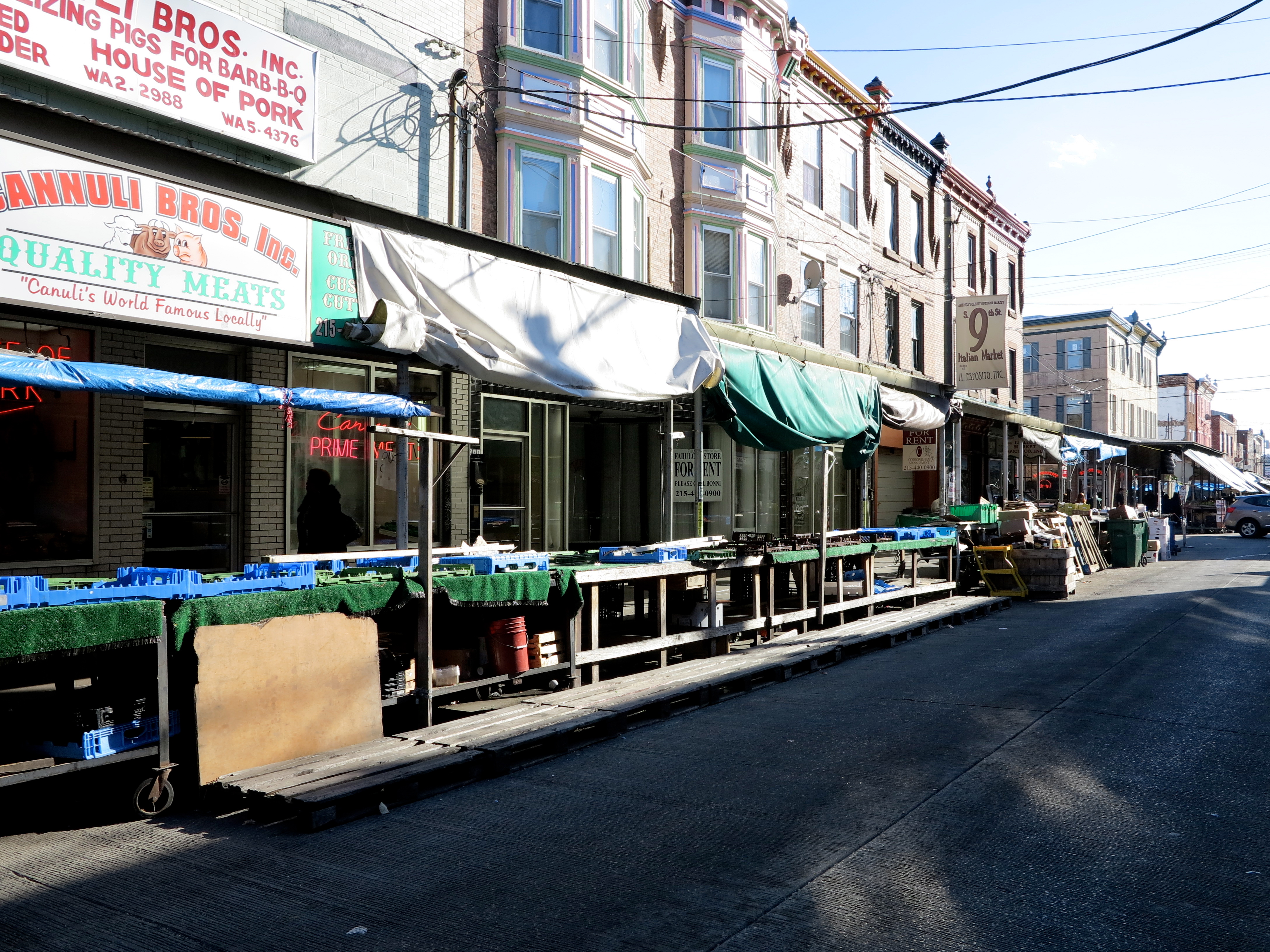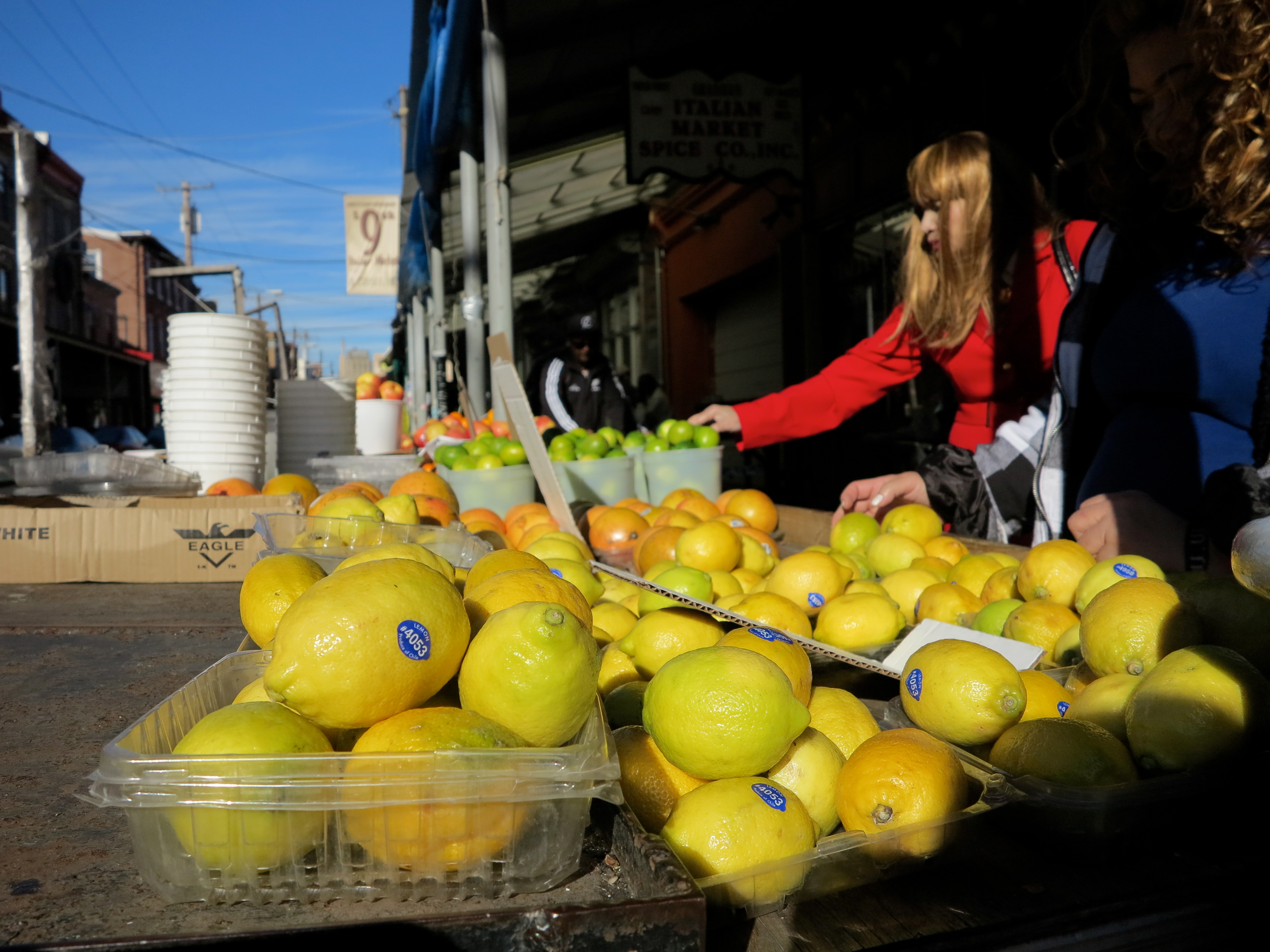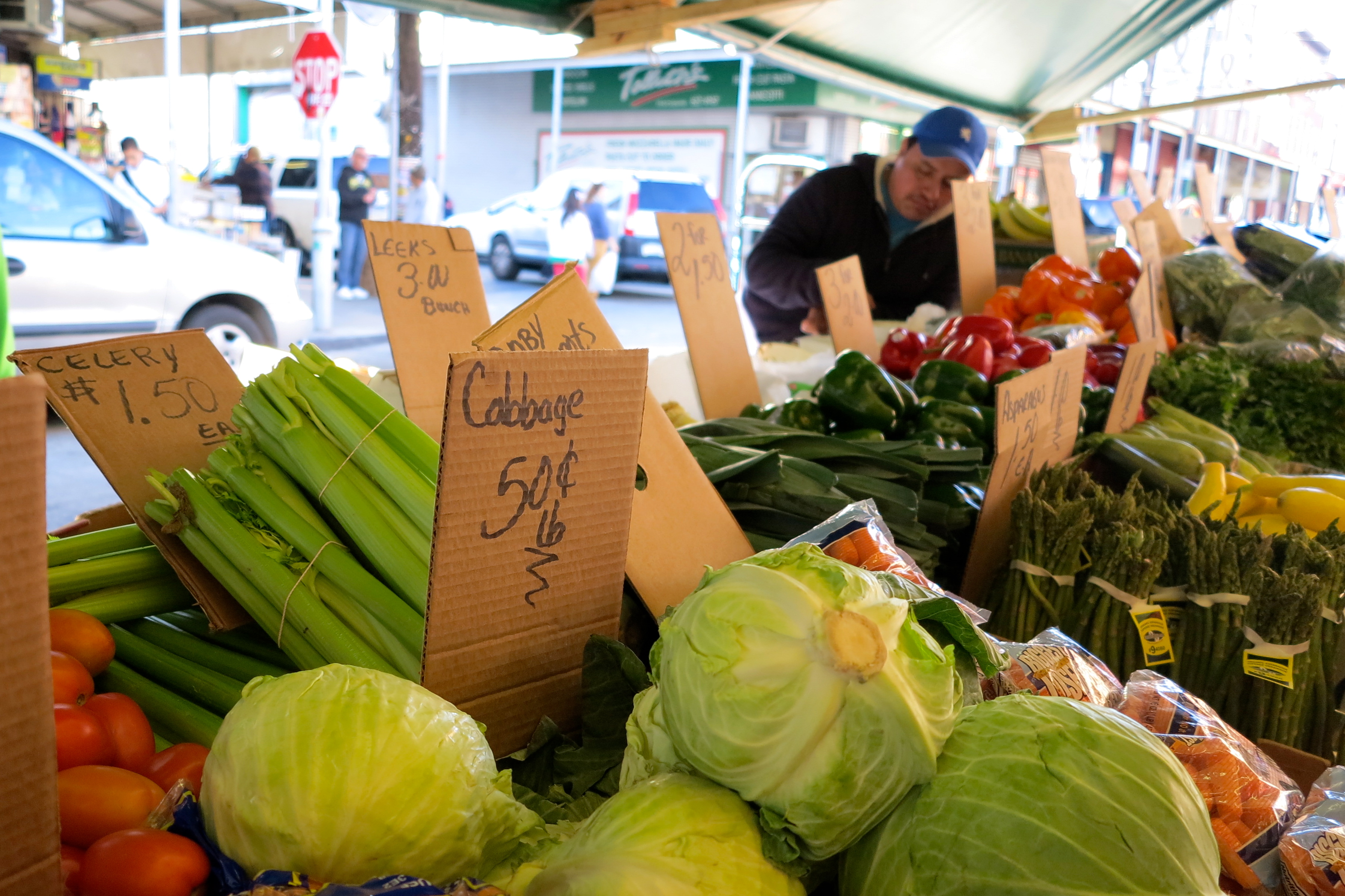Empty Italian Market stands could fill up soon

Curbside markets used to line parts of 2nd, 4th, 7th and 9th streets. But South 9th Street’s “Italian Market” is the only survivor of its kind.
Since the turn of the 20th century the city has officially licensed, leased, and regulated the market’s curbside stands. But new legislation passed by City Council this month would transfer the management and rental duties for the 9th Street Market over to the South 9th Street Business Association.
“The city just isn’t in the stand business anymore,” explained Michele Gambino, Business Manager for the Association.
The 9th Street Market has 160 spaces for stands between Christian and Federal streets, but only half are occupied. The stands are, however, a defining feature of the 9th Street Market, setting it apart from any other neighborhood commercial corridor. Now the hope is to give that tradition a shot in the arm by giving the Association greater control over filling vacancies and managing the vendor mix.

The market won’t look much different come January 1, 2014 when the Associaiton assumes management of the stands. The changes ahead mostly have to do with who can rent a stand, how many stands one vendor can lease, and how prospective vendors will be vetted.
The Philadelphia Code pertaining to curb markets dates from the early 20th Century and is very specific. In addition to restricting the kinds of goods that may be sold at a curb market (“only fresh fruits and fresh vegetables, boxed fresh eggs, frankfurter sandwiches, shoes and dry goods.”) the code stipulates that stands must be made of “a wheeled pushcart, measuring not more than 10 feet in length, 36 inches in width and 42 inches in height.”
Those wheeled carts will remain a requirement, Gambino said, explaining that the traditional form has its origin in the horse-drawn carts that farmers used to use to bring their goods to the market. While the carts will remain the same, where they can go will change slightly: The market’s official southern boundary has officially been been shifted one block north, from Passyunk Avenue to Federal Street.
Gambino said that vendor requirements will relaxed, and will no longer restrict stand rental to city residents who also own a brick-and-mortar business in the market. That shift is geared at giving smaller vendors looking for startup space an opportunity to rent a stand.
A volunteer committee will evaluate rental applications from prospective vendors with an eye toward enhancing the market’s vitality, quality, and variety. Gambino said the Association will review stand applications on a first-come-first serve basis.
The biggest change will be the Association’s ability to shape the vendor mix at the market through active recruitment.
“We know we need an organic produce stand,” Gambino said in hopes of meeting that consumer demand. The market is and always will emphasize food, Gambino stressed, but the association would like to invite local craft vendors to occupy stands, particularly given the popularity of the Italian Market Festival’s craft booths. “The more diverse it is the more shoppers will come and have a better experience.”

WHYY is your source for fact-based, in-depth journalism and information. As a nonprofit organization, we rely on financial support from readers like you. Please give today.





